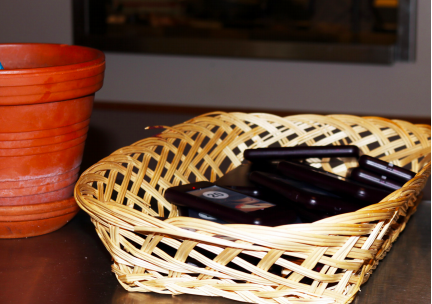On July 20 the campus cafeteria ditched order number tents and began to use digital, coaster-style pager systems. This means future cafeteria customers will no longer have food delivered to their table by cafeteria staff. Instead, when paged, customers will now walk to the pick-up area and trade their pagers for their order.
This may prove useful as campus facilities continue to accommodate a growing student body. According to the WSU Institutional Research enrollment headcount, WSU Vancouver’s 2017 fall semester saw 120 more enrollments than the previous fall. While the Vancouver campus only made up 12 percent of the university’s total student body in 2017, it was responsible for 25 percent of the university’s overall enrollment growth.
This is not the first update the cafeteria has implemented this year. On March 1 the cafeteria had new credit card machines installed. Additionally, on Aug. 16 cafeteria staff began navigating a new and improved ordering system.
Recent public affairs graduate Michael DeManti worked as a cook in the cafeteria for two years and talked about the impact the machines had towards the end of his time at the cafeteria.
“Looking out through the order window, it was clear that on average the lines had been visibly reduced,” DeManti said.
Despite this noted improvement, DeManti remains skeptical about the new pager systems.
“There does not seem to be a designated space available for people to come pick up their orders in the first place,” he said. “Until they address the issue of overall available space, the pager implementation will remain counter-productive.”

Cafeteria food service manager, Brad Havist, explains how he believes the pager system will help keep the pick-up area clutter-free.
“The intent of the pager system is not to have customers waiting around the area for their food,” Havist said. “They allow us to page customers when their food is ready and then they can come and get it. So far it has been very well received and seems to work very well.”
At the beginning of the summer some cafeteria staff saw their scheduled hours reduced. Shortly after, several students were laid off.
“Staffing was cut to the very basic, with one person per station,” DeManti said.
“This was due to lower than expected sales,” Havist said of the summer layoffs.
One month before Havist was hired as food service manager in mid-February, his predecessor, Samantha Zizza, increased food prices in response to Washington’s Jan. 1 minimum wage increase.
Despite the recent changes in pricing and sales, Havist remains optimistic about the cafeteria’s operations, “If students are looking for work they are welcome to apply.”
The cafeteria has now resumed its regular schedule of 7:30 a.m.– 6 p.m. Monday through Thursday and 7:30 a.m.– 3 p.m. Fridays.
